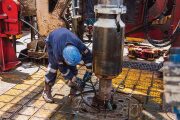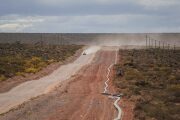After Gustavo Astie, executive manager for unconventionals at YPF, presented what he thought was an aggressive growth plan for the coming year to YPF management, he was asked: Would it be possible to go faster?
The answer was, there are limits. In the past 6 years, YPF has built a foundation for profitably developing the Vaca Muerta, but it is just now beginning to see if what worked in the initial pilots can be transferred elsewhere in the huge formation.
When it comes to the pace of development, YPF needs to work with corporate partners providing much-needed money as well as expertise. Those partners include some of the biggest, most technically savvy companies in the industry, which took their time getting into unconventional development.
“YPF is the operator on these blocks but it seeks approval on development plans with partners whose expertise is needed. We are not strong, dominant partners. We are learning from our partners,” Astie said.
The partnership deals offer up to 5 years for the exploration phase, but YPF is looking for ways to compress the time required for pilot programs to development, such as focusing pilot testing on tighter areas and speeding facilities development using standardized, modular units.
YPF is also trying to speed up the learning process. While US plays were pioneered by hordes of independent oil companies looking out for new ideas from others, in Argentina the number of companies are limited but they share corporate ties.
YPF has built an unconventional organization working with partners in companies sharing a long-term production focus. Pablo Bizzotto, vice president for upstream at YPF, describes the goal as “cost reduction without compromising the production of our wells.”
The money saved by drilling fast, though, is a lot easier to see than the cost of a crooked hole, whose impact only becomes apparent over time.
YPF is “trying to shift the way drillers look at the well” to make them more conscious of the value of drilling a quality hole, said Matias Fernandez-Badessich, senior advisor, reservoir engineering for YPF.
That concern is shared by Giovanni Landinez, general manager for drilling and completions, who said that YPF had recently tried and rejected an automated drilling control unit from a service company. The problem was the program was so focused on speed that, like a driver with a heavy foot on the accelerator, the company feared it would lack control when it needed to drill smooth curves.
While many US producers focus on reporting high initial production totals, YPF limits early output by choking back flows, so production peaks in the third month, said Matias Weissel, manager unconventional projects for YPF.

Consistent Execution
As the leader of a team of geologists picking the landing zones for exploration wells in the Vaca Muerta, Guillermina Sagasti worries whether drillers located more than 1,000 km from her office in Buenos Aires will execute work as planned.
“Day by day there is integration between the work we do in work stations and what is happening,” she said. “It does not matter if I selected the best landing zone if the well is a snake.”
Others at YPF are monitoring how every well is drilled from YPF’s regional office in the Vaca Muerta, where clusters of screens show production and pump data from the more than 550 wells that are wired to provide constant data. The value of that effort will depend on their ability to sift through the data to identify problems, and then persuade decision makers to address those issues.
Production data is displayed on a cluster of screens in the middle of a long room of cubicles filled with engineers and geologists. The location of a conference table used for morning field management meetings in front of the bank of screens used for production monitoring appears to be an effort to make a connection between field monitoring and management.
In the nearby drilling monitoring center, staff compare how decisions by drillers translate into performance. For example, they measure the time required for each drillpipe connection, which has fallen significantly over time since they began tracking it.
Ideas for minimizing costs and maximizing production flow into standardized plans. But those devising well plans are trying to balance the rewards of a disciplined approach with the need to adjust plans based on the location and what they have learned lately.
“Moving to factory mode also means having a fit-for-purpose design,” said Luciano Monti, subsurface unconventional manager for YPF. Variations in the rock mean, “We are not going to have one recipe for all Vaca Muerta wells.”
Bizzotto said he wants to hire a chief optimizer who will push the organization, which has four optimizing engineers on staff to apply what it is learning.
The upstream leader, who was recently promoted from head of YPF unconventionals, recognizes that the changes needed to identify these opportunities and build them into the operation represent a significant change that he would like to spread throughout the operation. “We are creating a new DNA in our company,” he said.






